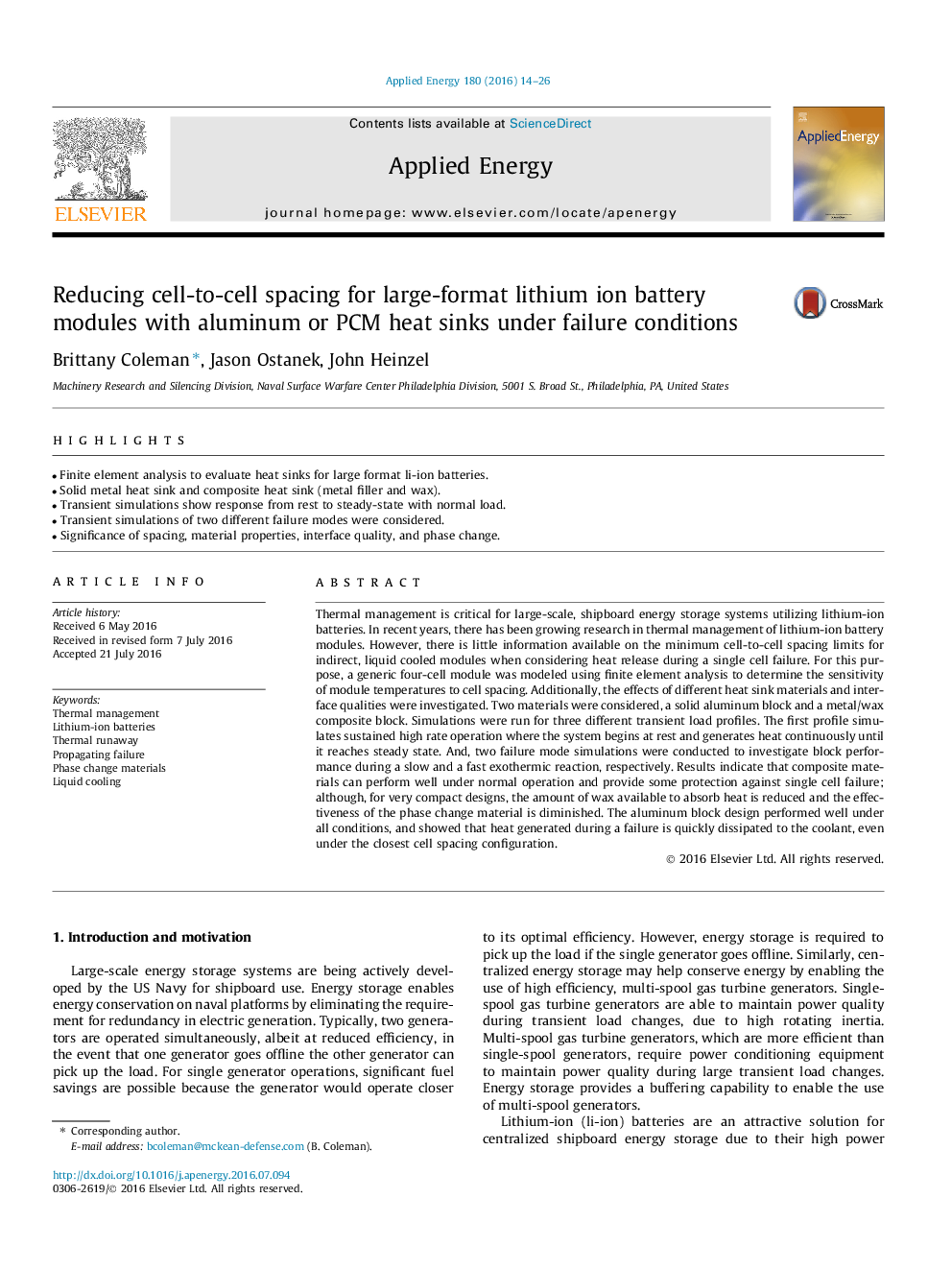| کد مقاله | کد نشریه | سال انتشار | مقاله انگلیسی | نسخه تمام متن |
|---|---|---|---|---|
| 242435 | 501845 | 2016 | 13 صفحه PDF | دانلود رایگان |

• Finite element analysis to evaluate heat sinks for large format li-ion batteries.
• Solid metal heat sink and composite heat sink (metal filler and wax).
• Transient simulations show response from rest to steady-state with normal load.
• Transient simulations of two different failure modes were considered.
• Significance of spacing, material properties, interface quality, and phase change.
Thermal management is critical for large-scale, shipboard energy storage systems utilizing lithium-ion batteries. In recent years, there has been growing research in thermal management of lithium-ion battery modules. However, there is little information available on the minimum cell-to-cell spacing limits for indirect, liquid cooled modules when considering heat release during a single cell failure. For this purpose, a generic four-cell module was modeled using finite element analysis to determine the sensitivity of module temperatures to cell spacing. Additionally, the effects of different heat sink materials and interface qualities were investigated. Two materials were considered, a solid aluminum block and a metal/wax composite block. Simulations were run for three different transient load profiles. The first profile simulates sustained high rate operation where the system begins at rest and generates heat continuously until it reaches steady state. And, two failure mode simulations were conducted to investigate block performance during a slow and a fast exothermic reaction, respectively. Results indicate that composite materials can perform well under normal operation and provide some protection against single cell failure; although, for very compact designs, the amount of wax available to absorb heat is reduced and the effectiveness of the phase change material is diminished. The aluminum block design performed well under all conditions, and showed that heat generated during a failure is quickly dissipated to the coolant, even under the closest cell spacing configuration.
Journal: Applied Energy - Volume 180, 15 October 2016, Pages 14–26